Enjoy Festivities with DIY Holiday Wreaths
There's something truly magical about the holiday season, isn't there? The air is filled with warmth, laughter, and a hint of nostalgia. One of the best ways to embrace this festive spirit is by creating your very own DIY holiday wreath. Imagine the joy of hanging a wreath that you've crafted with your own hands, adorned with personal touches and vibrant decorations. Not only does it serve as a stunning centerpiece for your door, but it also tells a story—your story. In this article, we'll dive into the world of holiday wreath-making, exploring creative ideas, essential materials, and step-by-step instructions to help you enhance your festive decorations. So, grab your crafting supplies and let’s get started on this delightful journey!
Selecting the perfect materials is crucial for your DIY holiday wreath. The beauty of wreath-making is that you can tailor it to reflect your unique style and preferences. From natural elements like twigs and pinecones to artificial decorations that can be reused year after year, the options are endless. If you're leaning towards sustainability, consider using materials that are eco-friendly or even repurposed from previous projects. Here’s a quick overview of some materials you might want to consider:
- Natural Elements: Twigs, dried flowers, and seasonal foliage.
- Artificial Decorations: Plastic ornaments, ribbons, and faux greenery.
- Sustainable Choices: Recycled materials, upcycled decorations, and biodegradable items.
By choosing the right materials, you're not just creating a wreath; you're crafting a piece of art that resonates with your holiday spirit.
Now that you've gathered your materials, it’s time to explore different crafting techniques that can elevate your wreath-making experience. Whether you prefer weaving, gluing, or wiring, each method offers a unique way to express your creativity. Let’s break down some of the most popular techniques:
Weaving is a traditional method for making wreaths that can yield stunning results. It’s like creating a tapestry of nature! To get started, you’ll need to gather some flexible twigs or vines. As you weave, remember to keep your design balanced. This means alternating between thick and thin materials to create an eye-catching texture. Here are a few tips to help you achieve a beautiful woven wreath:
- Choose flexible materials that are easy to bend.
- Start with a sturdy base to support your design.
- Don’t be afraid to experiment with different colors and textures!
Natural twigs can add a rustic charm to your wreath. Gathering twigs can be a fun outdoor activity—just make sure they’re clean and free of pests. Once you have your twigs, you’ll want to prepare them by trimming them to a manageable length and removing any leaves. This will ensure your wreath looks neat and polished.
Incorporating greenery is another fantastic way to enhance the festive appeal of your wreath. Think about using fresh pine, cedar, or eucalyptus to create a lush, vibrant design. When selecting your foliage, consider the scent and texture it will bring to your wreath. Attaching the greenery can be done using floral wire or hot glue, depending on your preference. The key is to layer the greenery in a way that feels natural and abundant.
Gluing is a popular technique for attaching decorations to your wreath. It’s quick, easy, and allows for a lot of creativity! When it comes to adhesives, hot glue works wonders for securing heavier items, while craft glue is great for lighter decorations. Just remember to let everything dry completely before hanging your masterpiece. This ensures that your decorations stay put, even in windy conditions!
Personalization is what makes your wreath truly unique. Adding personal touches can transform a simple wreath into a cherished family heirloom. Consider including family photos, initials, or themed decorations that reflect your personality or the memories you hold dear. The more personal your wreath is, the more it will resonate with you and your loved ones.
Exploring themed wreath ideas can spark your creativity. Whether you’re drawn to a winter wonderland theme or a rustic farmhouse aesthetic, there are endless possibilities. Here are a few themes to inspire you:
- Winter Wonderland: Use white and silver decorations with icy blue accents.
- Rustic Farmhouse: Incorporate burlap, pinecones, and dried flowers.
- Traditional Holiday: Embrace classic reds and greens with ornaments and ribbons.
Choosing a theme helps create a cohesive look that ties your holiday decor together.
Adjusting your wreath for different seasons is a fun way to keep your decor fresh. Why not transition your holiday wreath into a springtime beauty? Simply swap out the winter decorations for vibrant flowers and pastel colors. This not only extends the life of your creation but also allows you to enjoy your handiwork throughout the year!
Q: What materials are best for beginners?
A: Start with flexible twigs, faux greenery, and basic decorations like ribbons and ornaments. These materials are easy to work with and forgiving for first-time crafters.
Q: How long will my wreath last?
A: A wreath made from natural materials may last a few weeks, while those made with artificial decorations can last for years if stored properly.
Q: Can I use my wreath indoors?
A: Absolutely! Indoor wreaths can add a festive touch to your home decor, especially during the holiday season.

Choosing the Right Materials
When it comes to crafting your own holiday wreath, selecting the right materials is absolutely essential. Think of it as choosing the perfect ingredients for a delicious recipe; the quality and type of materials you use will significantly impact the final product. Whether you're a fan of a rustic look or prefer something more modern, there are a plethora of options available to suit your personal style and the overall theme of your holiday decor.
First off, let's talk about natural elements. Incorporating items like twigs, pinecones, and dried flowers can add a touch of organic beauty to your wreath. Not only do these materials look stunning, but they also evoke a sense of warmth and nostalgia, reminiscent of nature during the holiday season. When gathering natural elements, remember to consider the season—evergreens are a fantastic choice for winter, while vibrant blooms can brighten up a spring wreath.
If you're leaning towards a more contemporary approach, artificial decorations might be the way to go. These materials can range from faux berries and ribbon to glittery ornaments. The beauty of artificial decorations is their durability; they won’t wilt or fade, allowing you to enjoy your wreath for years to come. Plus, the variety of colors and styles available means you can easily find pieces that fit your vision.
For those who are environmentally conscious, consider opting for sustainable choices. Many craft stores now offer eco-friendly materials that are biodegradable or made from recycled products. Using sustainable materials not only helps the planet but also adds a unique flair to your wreath. Imagine a wreath adorned with reclaimed wood accents or organic cotton ribbons—it's a conversation starter that showcases your commitment to the environment.
To help you visualize your options, here’s a quick breakdown of materials you might consider:
| Material Type | Pros | Cons |
|---|---|---|
| Natural Elements | Eco-friendly, unique textures | Can wilt or decay over time |
| Artificial Decorations | Durable, wide variety | Less authentic look |
| Sustainable Choices | Environmentally friendly, unique | May be harder to find |
In summary, the materials you choose for your DIY holiday wreath will set the tone for your entire creation. Whether you opt for the charm of natural elements, the reliability of artificial decorations, or the eco-conscious appeal of sustainable options, each choice you make will contribute to the overall beauty and spirit of your wreath. So, gather your materials, unleash your creativity, and get ready to craft something truly special!

Crafting Techniques
When it comes to creating your own holiday wreath, the crafting techniques you choose can make all the difference. Each method brings its own unique flair and personality to your wreath, allowing you to express your creativity in ways that reflect your style. Think of it like cooking; the ingredients are essential, but the cooking techniques can elevate a simple dish into a gourmet experience. In wreath-making, understanding and mastering different crafting techniques can transform ordinary materials into extraordinary decorations that will wow your friends and family.
One of the most popular methods for crafting wreaths is weaving. This traditional technique not only provides a sturdy structure but also allows for a beautiful interplay of natural materials. Imagine intertwining twigs and vines, creating a harmonious blend that resembles nature’s own artistry. To get started with weaving, you’ll want to gather some flexible branches, such as willow or grapevine, which are perfect for this method. As you weave, focus on maintaining a consistent tension to ensure your wreath holds its shape.
Weaving is an art form that requires patience and a keen eye for balance. As you start, consider the following tips to achieve a stunning design:
- Choose your base: A sturdy frame, like a wire or foam ring, can provide a solid foundation for your woven wreath.
- Mix materials: Combining different types of twigs can add texture and visual interest.
- Keep it even: Aim for a balanced look by spacing your materials evenly as you weave.
Natural twigs can add a rustic charm to your wreath, making it feel warm and inviting. To gather twigs, take a stroll through your local park or garden, and look for fallen branches. Once you’ve collected your twigs, it’s essential to prepare them properly. Trim any excess leaves and ensure they are dry to prevent mold. If you’re looking for a more polished look, consider painting or staining the twigs to match your holiday theme.
Now, let’s talk about the magic of incorporating greenery into your wreath. Fresh foliage, such as pine, cedar, or eucalyptus, not only adds a vibrant splash of color but also infuses your wreath with a delightful fragrance. When selecting greenery, opt for a mix of textures and shades to create depth. To attach the greenery, you can use floral wire or hot glue, depending on your preference. As you arrange the foliage, think about layering—this technique will give your wreath a lush, full appearance that draws the eye.
If weaving isn’t your style, don’t worry! Gluing is a fantastic alternative that allows for a more straightforward approach to wreath-making. This method is perfect for those who want to attach various decorations, such as ornaments, ribbons, or even dried flowers. When choosing adhesives, consider using a hot glue gun for quick bonding, or opt for a craft glue for a more flexible option. The key is to apply a generous amount of glue to ensure your embellishments stay put, especially if your wreath will be displayed outdoors.
In summary, the crafting techniques you choose for your DIY holiday wreath can significantly impact the final product. Whether you prefer the traditional art of weaving or the simplicity of gluing, each method offers a unique way to express your creativity. So gather your materials, unleash your imagination, and let the crafting begin!
Q: What materials do I need to start crafting a wreath?
A: Basic materials include a wreath frame (wire or foam), natural twigs or artificial greenery, floral wire, hot glue gun, and decorations like ribbons or ornaments.
Q: Can I make a wreath without any crafting experience?
A: Absolutely! Wreath-making is a fun and accessible craft for everyone, regardless of skill level. Start with simple techniques and build your confidence as you go.
Q: How can I personalize my wreath?
A: Personalize your wreath by adding family photos, initials, or themed decorations that reflect your personality or holiday spirit.
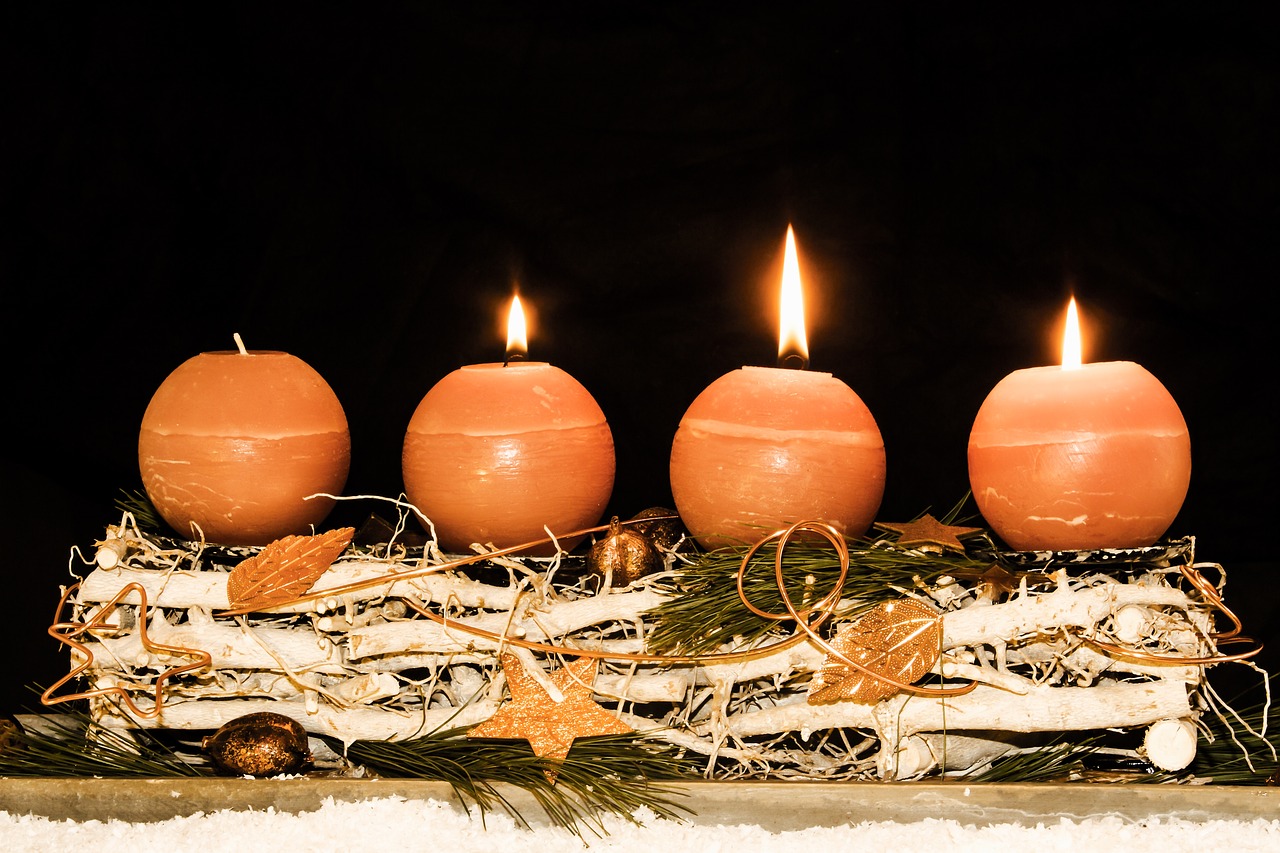
Weaving Techniques
Weaving is not just a method; it's an art form that transforms simple materials into a breathtaking holiday wreath. When you think about it, weaving is akin to telling a story, where each twist and turn contributes to a grand narrative of beauty and festivity. The beauty of weaving lies in its versatility and the tactile connection it fosters with nature. Imagine the satisfaction of taking a handful of twigs and greenery, and through a few simple techniques, creating something that not only looks stunning but also resonates with the spirit of the season.
To get started with weaving, you’ll need to gather some natural materials. Think of willow branches, grapevines, or even sturdy vines from your backyard. These materials are not only accessible but also add a rustic charm to your wreath. The first step in your weaving journey is to create a base. A circular frame made from a thicker branch or a wire frame can serve as the foundation. Once you have that, you can start weaving your twigs around the frame.
As you weave, it’s crucial to maintain a balance in your design. You want your wreath to look full and lush, but not overcrowded. A good tip is to alternate the direction of your twigs as you weave them in. This technique not only strengthens the structure but also adds a dynamic visual interest to your wreath. Remember, it’s all about layering—think of it like building a cozy blanket where each layer adds warmth and texture.
Here’s a quick overview of the basic weaving steps:
- Gather Materials: Collect twigs, greenery, and any embellishments you wish to use.
- Create a Base: Use a sturdy frame to start your weaving.
- Weave Twigs: Start weaving your twigs around the base, alternating directions for balance.
- Add Greenery: Incorporate fresh or dried greenery as you go, weaving them into the structure.
- Secure Everything: Make sure all elements are tightly woven in and secure.
Once you’ve achieved the desired fullness, it’s time to secure your work. Use thin wire or twine to tie off any loose ends and ensure that everything stays in place. This step is crucial, as it helps maintain the integrity of your wreath, especially if you plan to hang it outdoors where it may be exposed to wind and rain.
Weaving may seem daunting at first, but with practice, it becomes second nature. The more you experiment with different materials and techniques, the more unique your creations will be. Don’t be afraid to let your imagination run wild! You might even consider incorporating other elements like dried flowers or seasonal ornaments into your design.
In conclusion, weaving is a delightful way to create a holiday wreath that reflects your personal style and creativity. So gather your materials, roll up your sleeves, and let the magic of weaving transform your festive decorations into a stunning centerpiece that will be the talk of your holiday gatherings!
Q: What materials are best for weaving a wreath?
A: Natural materials such as willow, grapevine, and sturdy twigs are excellent choices. You can also incorporate fresh or dried greenery for added texture.
Q: How do I ensure my wreath stays secure?
A: Make sure to tie off any loose ends with wire or twine and weave tightly to maintain the structure, especially if it will be exposed to outdoor elements.
Q: Can I use artificial materials?
A: Absolutely! Artificial materials can add longevity and color to your wreath. Just ensure they are securely attached to your woven base.

Using Natural Twigs
When it comes to creating a stunning holiday wreath, natural twigs can provide a rustic charm that artificial materials simply can't replicate. These organic elements not only add texture but also bring a sense of warmth and authenticity to your festive decorations. Imagine walking into a home adorned with a wreath made of twigs, evoking the beauty of nature right at your doorstep! To get started, you'll want to gather twigs from your backyard or local park. Look for branches that are flexible yet sturdy, as these will be easier to work with and will hold their shape.
Before diving into the weaving process, it's essential to prepare your twigs properly. Start by removing any leaves or smaller branches that may interfere with your design. You can use pruning shears or simply snap them off with your hands. Once your twigs are clean, soak them in water for a few hours. This step is crucial as it helps to soften the wood, making it more pliable for weaving. After soaking, lay them out to dry slightly; you want them damp but not dripping wet.
As you begin to weave, consider the following tips to ensure a balanced and beautiful design:
- Choose a Base: Start with a sturdy circular frame, such as a wire wreath form or a larger twig circle. This will serve as the backbone of your wreath.
- Layering: Begin layering your twigs, starting from the outer edge and working your way inward. This technique creates depth and visual interest.
- Balance is Key: As you weave, step back occasionally to assess the overall look. Ensure that the thickness and length of the twigs are evenly distributed.
Once you have achieved the desired shape and fullness, secure your twigs in place using floral wire or twine. This will help maintain the integrity of your wreath while allowing you to add additional decorations later. The beauty of using natural twigs lies in their unique shapes and sizes, so embrace the imperfections! Each twist and turn tells a story, adding character to your creation.
Finally, don't forget to embellish your twig wreath with seasonal touches. You can attach pinecones, berries, or even dried flowers to enhance its charm. The combination of natural twigs with these elements can transform your wreath into a stunning focal point for your home. So, gather your materials, unleash your creativity, and enjoy the process of crafting a wreath that reflects your personal style!
Q: Where can I find natural twigs for my wreath?
A: You can gather twigs from your backyard, local parks, or even purchase them from craft stores. Just ensure they are clean and free of pests.
Q: How do I keep my twig wreath looking fresh?
A: If you want to preserve the natural look, consider spraying it lightly with a clear sealant. Additionally, keep it in a cool, dry place away from direct sunlight to prevent drying out.
Q: Can I use twigs from any type of tree?
A: Yes, you can use twigs from various trees, but softer woods like willow or birch are easier to work with. Hardwoods like oak may be more challenging to weave.
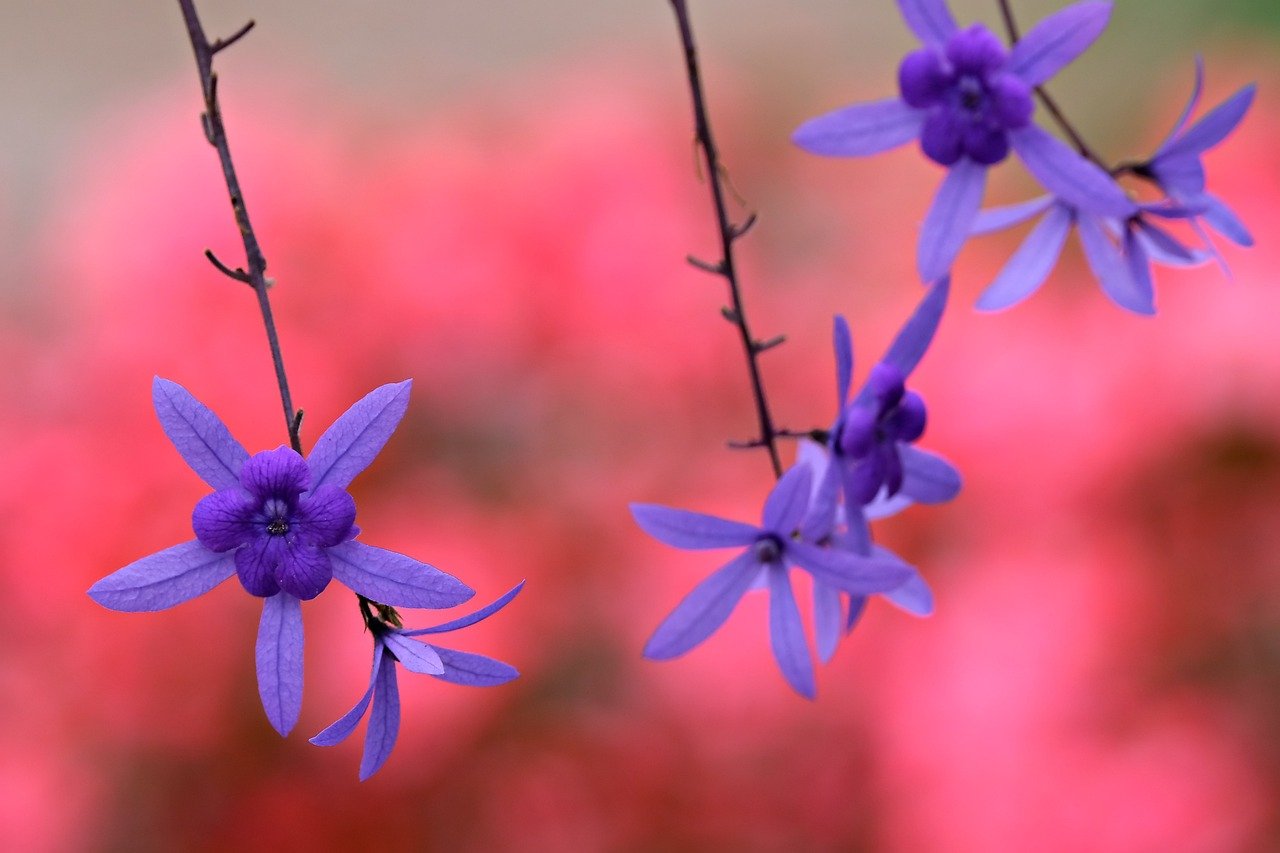
Incorporating Greenery
When it comes to creating a stunning holiday wreath, incorporating greenery is like adding the icing on the cake—it brings life and vibrancy to your creation! Imagine the refreshing scent of pine, the lushness of eucalyptus, or the delicate beauty of fir branches. The right greenery not only enhances the visual appeal of your wreath but also evokes the spirit of the season. So, how do you choose and attach the perfect foliage to your wreath? Let's dive into the essentials!
First off, consider the type of greenery you want to use. There are countless options, but some popular choices include:
- Pine: Known for its long-lasting freshness and classic holiday scent.
- Spruce: Offers a beautiful blue-green hue and sturdy branches, perfect for a robust wreath.
- Cedar: Features soft, feathery leaves and a lovely aroma, adding a unique texture.
- Eucalyptus: Provides a modern touch with its silvery leaves and delicate scent.
Once you've selected your greenery, it’s time to prepare it for your wreath. Start by gathering fresh branches, making sure to cut them at an angle to allow for better water absorption if you plan to keep them fresh. If you’re using dried or faux greenery, ensure they’re clean and free from dust. You want your wreath to shine, right?
Now, let’s talk about how to attach the greenery to your wreath base. This is where your creativity can really shine! You can use floral wire or hot glue to secure the branches. If you're going for a more traditional look, consider using the wiring technique:
1. Cut your greenery into manageable lengths, about 6-8 inches each. 2. Start by placing a few pieces at the base of your wreath frame. 3. Wrap the floral wire around the stems and the frame, securing them tightly. 4. Continue layering the greenery, overlapping each piece slightly, until the entire wreath is covered.
This technique not only ensures that your greenery stays in place but also allows you to create a beautiful, layered effect. Remember, the key is to mix different types of greenery to create depth and interest. Don't hesitate to experiment with textures and colors!
As you work, take a step back occasionally to assess your design. Is it balanced? Does it evoke the feeling you want? The beauty of DIY wreath-making is that it’s all about personal expression. If something doesn’t feel right, simply adjust it until it does. And if you want to add some flair, consider incorporating seasonal elements like berries, pine cones, or even dried oranges to complement your greenery.
Incorporating greenery into your holiday wreath not only enhances its beauty but also connects you to nature and the joy of the season. So, gather your materials, unleash your creativity, and let your wreath reflect your festive spirit!
Q: How long will fresh greenery last on my wreath?
A: Fresh greenery can last anywhere from a few days to several weeks, depending on the type of foliage and the care it receives. Keeping it hydrated and in a cool environment can help prolong its freshness.
Q: Can I use artificial greenery for my wreath?
A: Absolutely! Artificial greenery is a great option for a long-lasting wreath. It requires no maintenance and can be reused year after year.
Q: What if I want to make my wreath more festive?
A: You can add decorations like ribbons, ornaments, or even lights to enhance the festive feel of your wreath. Get creative and have fun with it!
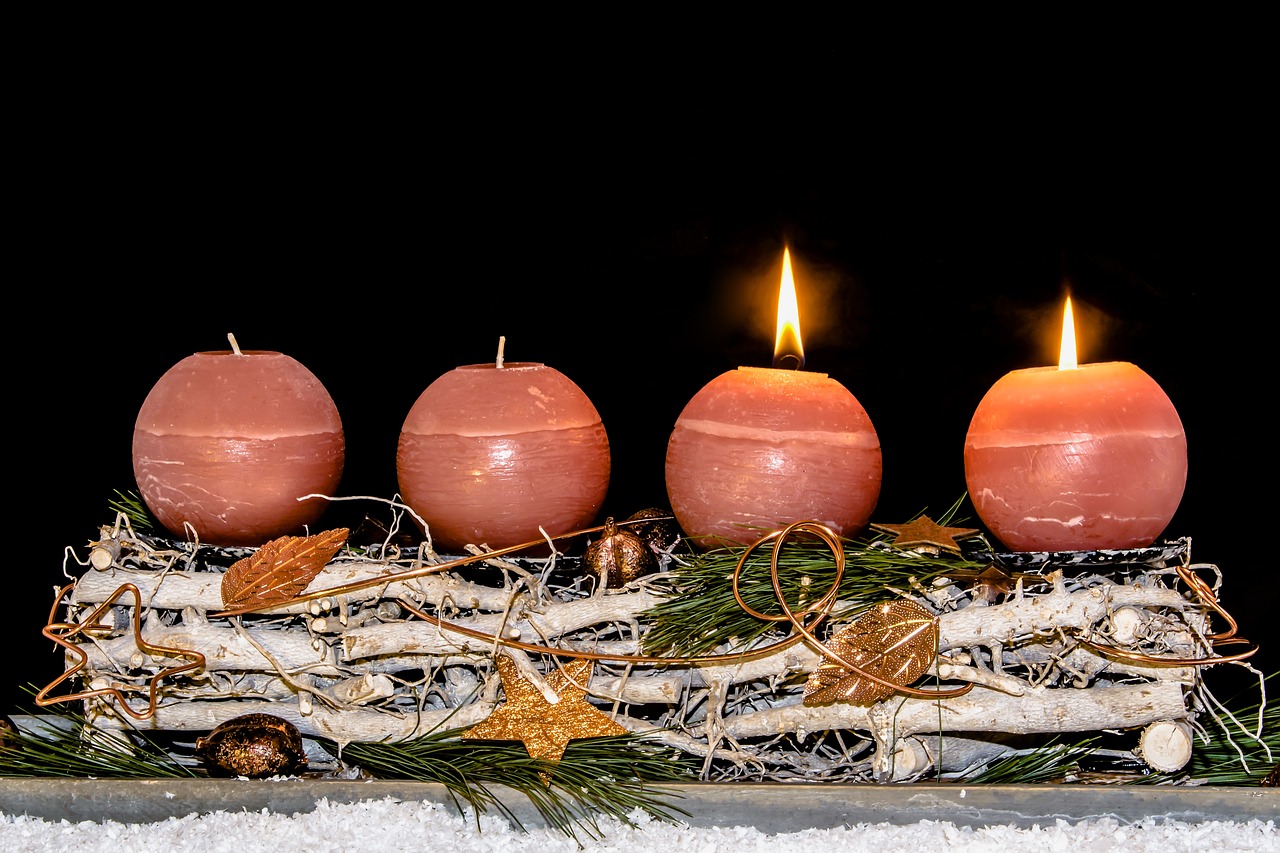
Gluing and Securing Decorations
When it comes to creating your stunning holiday wreath, gluing and securing decorations is a crucial step that can make or break your masterpiece. The right adhesive not only holds your embellishments firmly in place but also ensures that your wreath can withstand the test of time—whether it's hanging on your door or gracing your wall. So, what are the best adhesives to use? Let’s dive into the options!
First off, hot glue guns are a favorite in the crafting world. They provide a strong bond and dry quickly, making them ideal for attaching heavier decorations like ornaments or pine cones. However, be cautious! Hot glue can be a bit tricky to work with, especially if you're not accustomed to it. Always remember to use a low-temperature glue stick if you’re working with delicate materials, as high temperatures can damage them.
Another excellent option is craft glue, which is perfect for lighter decorations such as ribbons and artificial flowers. This type of glue typically dries clear and remains flexible, allowing your wreath to maintain its shape without cracking. Plus, it’s easier to clean up than hot glue, making it a great choice for beginners.
For those looking for a more natural approach, consider using floral adhesive. This glue is specifically designed for securing natural elements like greenery and dried flowers. It’s waterproof, which is a huge plus if your wreath will be exposed to moisture. Just keep in mind that floral adhesive may take a bit longer to dry, so patience is key!
Now, let’s talk about securing your decorations effectively. Here are some tips to ensure everything stays in place:
- Layering: Start with larger items at the back and gradually layer smaller ones in front. This creates depth and visual interest.
- Use wire: For heavier decorations, consider using floral wire in addition to glue. This adds extra support and prevents any drooping.
- Test stability: After securing each decoration, gently tug on it to ensure it’s firmly attached. If it wobbles, add more glue or wire.
Lastly, don’t forget to clean up any excess glue that may seep out during the process. A quick wipe with a damp cloth will keep your wreath looking polished and professional. With the right gluing techniques and materials, your holiday wreath will be a showstopper that brings joy and festive cheer to your home!

Personalizing Your Wreath
When it comes to holiday wreaths, personalization is the secret ingredient that transforms a simple decoration into a cherished family heirloom. Imagine walking into your home and being greeted by a wreath that not only reflects the festive spirit but also tells a story about your family. Whether it's through the use of colors, materials, or unique embellishments, adding a personal touch can make your wreath truly one-of-a-kind. So, how can you infuse your personality into your wreath-making project?
One of the most delightful ways to personalize your wreath is by incorporating family photos. This can be done by printing small images of your loved ones and securing them onto the wreath with decorative clips or even gluing them onto wooden shapes. Not only does this add a heartfelt touch, but it also serves as a great conversation starter when guests come over. Imagine a wreath adorned with snapshots from memorable family gatherings, bringing back fond memories each time you pass by!
Another fantastic idea is to use initials or monograms. You can purchase wooden or metal letters at craft stores, or even create your own from cardboard. Attach these letters to your wreath to represent your family's last name or the initials of each family member. This simple addition can make your wreath feel more intimate and tailored to your home. You could also consider using seasonal decorations that reflect your family’s interests—think sports team colors or hobbies that your family enjoys.
To take personalization a step further, consider selecting a theme that resonates with your family's traditions. For instance, if your family has a love for nature, you might opt for a wreath decorated with pinecones, acorns, and dried flowers. Alternatively, if you celebrate a specific holiday with unique symbols, incorporate those elements into your design. This could mean adding small ornaments, themed ribbons, or even handmade crafts that represent your family's unique celebrations.
Don’t forget about the color palette! Choosing colors that resonate with your family’s aesthetic can tie everything together beautifully. You might prefer classic reds and greens for a traditional look, or perhaps you lean towards a more modern palette with whites, golds, and silvers. The colors you choose can evoke different feelings and set the mood for your holiday celebrations.
For those who enjoy crafting, consider creating a customized wreath base using materials that represent your family. You could weave together twigs from your backyard, or use fabric scraps from old clothes to create a unique texture. This not only adds a personal touch but also gives you a chance to recycle and upcycle materials that might otherwise go to waste.
Lastly, don't shy away from involving the whole family in the wreath-making process. This can be a fun activity where everyone contributes their ideas and creativity. You can have a mini competition to see who can create the most unique decoration or even host a wreath-making party with friends and neighbors. The memories you create while crafting together will be just as meaningful as the wreath itself!
- What materials are best for personalizing my wreath?
Consider using natural elements, photos, initials, and themed decorations that resonate with your family. - How can I make my wreath last through different seasons?
Use durable materials and consider seasonal adjustments, like swapping out decorations or colors to fit the time of year. - Can I involve my kids in the wreath-making process?
Absolutely! It’s a great way to create family memories while fostering their creativity.
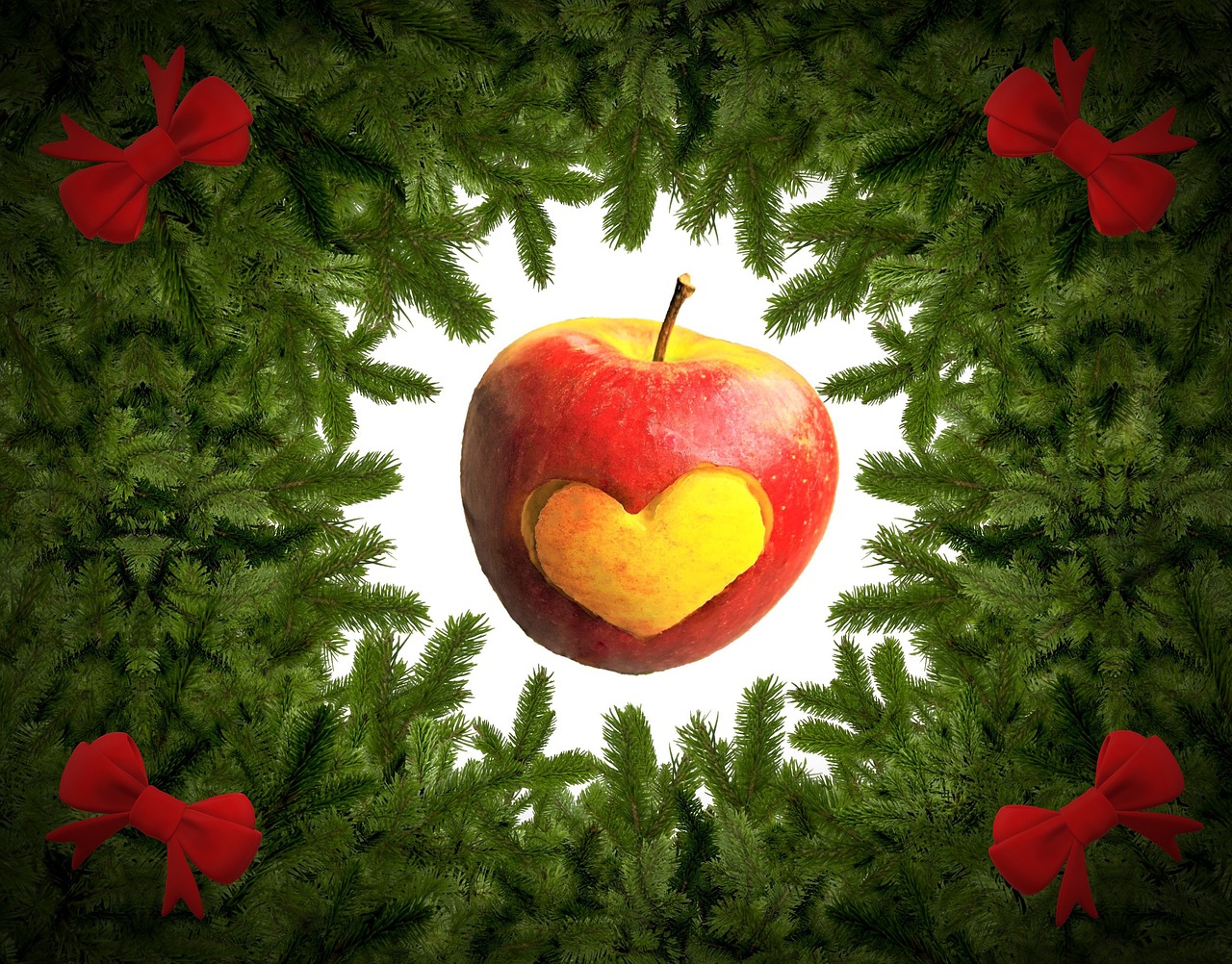
Themed Wreath Ideas
When it comes to creating a stunning holiday wreath, embracing a theme can elevate your design from ordinary to extraordinary. Think of your wreath as a canvas—what story do you want it to tell? Whether you’re channeling a cozy winter vibe or a vibrant spring celebration, the right theme can bring your wreath to life and make it a focal point of your festive decor.
One popular theme is the Winter Wonderland. Imagine a wreath adorned with shimmering snowflakes, frosted pinecones, and delicate white lights. To achieve this look, start with a base of evergreen branches, then layer in faux snow and silver accents. You can even add a few glittery ornaments to capture that magical winter sparkle. The result? A wreath that welcomes guests with the enchanting spirit of the season.
If you prefer a more rustic approach, consider a Farmhouse Theme. This style is all about natural elements and simplicity. Use a combination of burlap ribbon, dried flowers, and wooden accents. For instance, you might incorporate twine-wrapped mason jars filled with dried lavender or wildflowers. This theme not only looks great but also brings a sense of warmth and comfort to your home.
Another exciting idea is the Coastal Theme, perfect for those who love the beach. Picture a wreath decorated with seashells, driftwood, and soft blue accents. You can use a grapevine base to mimic the natural textures found by the shore. Adding a splash of coral or sea glass can create a refreshing, breezy feel that transports you straight to the seaside, even in the middle of winter.
For a more festive approach, consider a Traditional Christmas Theme. This involves classic colors like red, green, and gold. Think of a wreath filled with holly berries, pine branches, and perhaps even a few ornaments that bring back childhood memories. You can also hang a beautiful bow at the top to tie everything together. This timeless look is sure to evoke nostalgia and holiday cheer.
Don’t forget about the Seasonal Adjustments you can make to your themed wreath. For example, a wreath that starts as a Christmas masterpiece can easily transition into a New Year’s celebration by swapping out the ornaments for sparkling gold accents and adding a few celebratory elements like champagne glasses or party hats. This flexibility allows your creativity to shine throughout the entire season.
As you explore these themed wreath ideas, remember that personalization is key. Adding a few of your own touches will make your wreath truly unique. Whether it’s a family photo, a favorite quote, or a small trinket that holds special meaning, these elements can transform your wreath into a cherished piece of holiday decor.
| Wreath Theme | Key Elements | Suggested Colors |
|---|---|---|
| Winter Wonderland | Snowflakes, Pinecones, Lights | White, Silver, Blue |
| Farmhouse | Burlap, Dried Flowers, Wood | Natural, Earth Tones |
| Coastal | Seashells, Driftwood, Blue Accents | Soft Blue, Coral, White |
| Traditional Christmas | Holly, Pine, Ornaments | Red, Green, Gold |
With these themed wreath ideas, you’re not just decorating; you’re creating a piece of art that reflects your style and spirit. So gather your materials, unleash your creativity, and let your wreath tell your story this holiday season!
Q: How can I make my wreath last longer?
A: To ensure your wreath remains fresh, regularly mist it with water and keep it in a cool, dry place away from direct sunlight.
Q: Can I use real flowers in my wreath?
A: Yes! You can use real flowers, but keep in mind they may wilt quickly. Consider using dried or preserved flowers for a longer-lasting option.
Q: How do I store my wreath after the holidays?
A: Store your wreath in a cool, dry place. Use a wreath box or a large plastic bag to protect it from dust and damage.
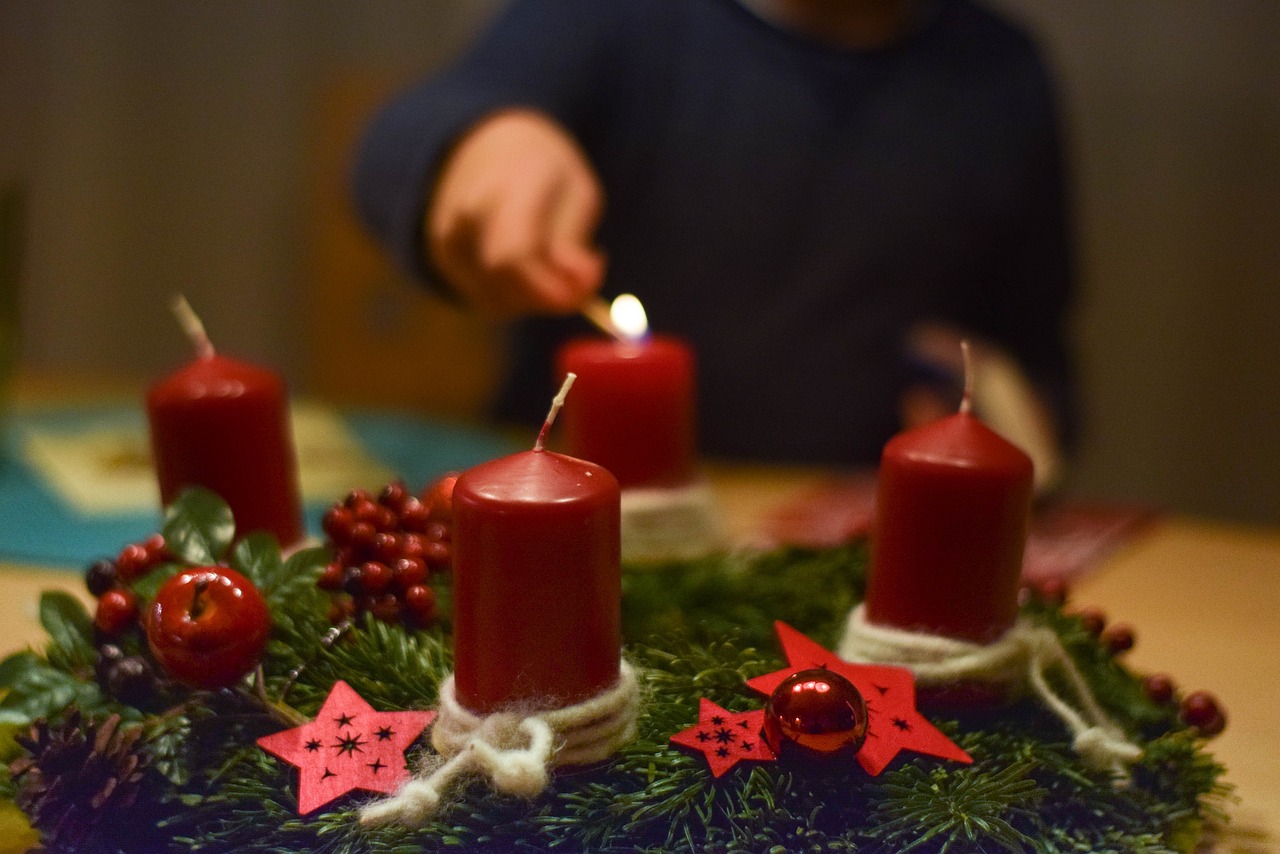
Seasonal Adjustments
Adjusting your holiday wreath for different seasons is not only a fun activity but also a fantastic way to keep your home decor fresh and inviting throughout the year. Just like changing your wardrobe with the seasons, your wreath can also reflect the beauty and spirit of each time of year. Imagine welcoming spring with a burst of pastel flowers, or embracing the cozy vibes of autumn with deep oranges and browns. The possibilities are endless!
To start, consider the seasonal elements that are available to you. For instance, in spring, you might want to incorporate vibrant blooms like tulips and daffodils, while summer could be represented with sunflowers and bright greens. In fall, think about using pinecones, dried leaves, and warm-hued flowers. And in winter, evergreen branches, berries, and even little ornaments can add a festive touch. The key is to select materials that not only represent the season but also resonate with your personal style.
Here’s a simple guide to help you transition your wreath with the seasons:
- Spring: Use light, airy materials such as faux flowers, ribbons, and pastel colors.
- Summer: Incorporate bright and bold florals, seashells, or even fruits like limes and lemons for a refreshing touch.
- Autumn: Add elements like dried leaves, mini pumpkins, and warm-colored flowers to evoke the essence of fall.
- Winter: Utilize evergreen branches, berries, and metallic accents to create a cozy, festive atmosphere.
As you make these adjustments, think about how you can also incorporate personal touches. Perhaps you have a collection of seasonal ornaments that could be added to your wreath, or maybe family photos could be included to create a cherished memory piece. The beauty of DIY wreath-making is that it allows for a high degree of personalization, enabling you to showcase your creativity and style.
Lastly, don’t forget about the maintenance aspect! Depending on the materials you use, your wreath may need some care to keep it looking its best. For example, if you use natural elements, be prepared to replace them as they dry out or fade. On the other hand, artificial decorations can simply be dusted off and rearranged to keep things looking fresh. Whichever route you choose, the joy of creating seasonal wreaths lies in the opportunity to express yourself and celebrate the unique beauty of each time of year.
Q: How often should I change my wreath?
A: It depends on your personal preference! Some people enjoy changing their wreath monthly to reflect the seasons, while others may prefer to switch it out for major holidays or events.
Q: Can I use real flowers in my wreath?
A: Yes! Real flowers can add a beautiful touch, but keep in mind that they may not last as long as artificial ones. If you choose to use real flowers, consider using them in combination with dried or preserved elements for longevity.
Q: What materials are best for outdoor wreaths?
A: If your wreath will be displayed outdoors, opt for weather-resistant materials such as faux greenery, plastic ornaments, and treated wood. This will help ensure your wreath withstands the elements.
Frequently Asked Questions
- What materials do I need to create a DIY holiday wreath?
To craft your own holiday wreath, you’ll need a few essential materials. Start with a base like a wire frame or a straw wreath. Gather natural elements such as twigs, pinecones, or dried flowers, and consider adding artificial decorations like ribbons, ornaments, or seasonal picks. Don’t forget your adhesives—hot glue guns work wonders!
- Can I use real greenery in my wreath?
Absolutely! Using real greenery like pine, fir, or eucalyptus can add a fresh, aromatic touch to your wreath. Just remember to keep it hydrated and consider using floral wire to secure it properly. It’s a great way to bring a bit of nature indoors!
- How do I personalize my wreath?
Personalizing your wreath is all about adding your unique flair! You can incorporate family photos, initials, or even themed decorations that reflect your personal style. Think about what represents your family or your favorite holiday memories, and let your creativity shine!
- What are some popular themes for holiday wreaths?
There are countless themes you can explore! From a cozy rustic farmhouse vibe with burlap and natural elements to a glamorous winter wonderland featuring glittery ornaments and faux snow, the possibilities are endless. Choose a theme that resonates with you and your home decor!
- How can I adjust my wreath for different seasons?
Transitioning your wreath for different seasons is a fun and creative process! You can easily swap out decorations—replace fall leaves with spring flowers or add festive ornaments for the holidays. This way, your wreath can be a year-round decoration that evolves with the seasons!


















